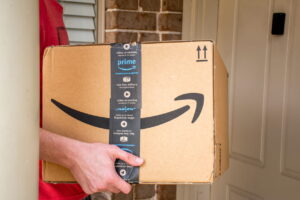A retail apocalypse is happening with stores seemingly closing down everywhere. Nevertheless, a number of strong brands have been able to swim against the current by opening their own new sales channels.
Brands that become retailers themselves: a survival strategy that works?
Recently, Levi’s announced plans to open as many as 100 new stores in 2020. Other, well-known brands such as Nespresso, Samsonite, and Nike are also part of this trend. Not only do they sell their products through a network of intermediaries, they also go directly to the end consumer: both online and in physical stores. “If brands become retailers themselves, they can strengthen their own position,” says Benny Sintobin of omnichannel specialist naYan.
Consumer goods brands and producers note that there are a number of downsides when selling through marketplaces and department stores such as bol.com, Inno, or Vanden Borre, Sintobin indicates. “Due to the fact that they are working via an intermediary, brands lose that direct interaction with their final consumer. They no longer know who their customer is. This becomes an even bigger challenge as consumers expect an increasingly personal approach.”
As a brand, you can’t control how distributors present your product to the end customer, the omnichannel expert explains. “If you are a manufacturer of sports shoes, your spikes are in the racks between all the other brands.
The customer experience with your brand depends to a large extent on the seller’s mood that day, as well as the store interior.” Moreover, sales through intermediaries are becoming less and less profitable. The pressure from global online players is significant. “Intermediaries are going to drive a very tough bargain with their supplying brands to counter competition with, for example, Amazon. This is how margins are eroding more and more.”
These are also the main reasons why retailers today choose to open new stores or launch their own e-commerce site. “We are convinced that these types of solutions are the way in which retail can survive,” says naYan’s General Manager.
However, setting up your own stores or ecommerce platform is not easy, and certainly not for smaller brands. “Your logistics suddenly become a lot more complex, you require specific technology and you need to recruit experts to look after your digital marketing and customer service. All of this costs money, takes time and involves risks.”
D2C brands are becoming more and more important.
eMarketer made a nice summary on D2C Commerce is doing in the USA. Statista can give you more insights about D2C market share in Europe. For india please visit Inc42’s overview.




